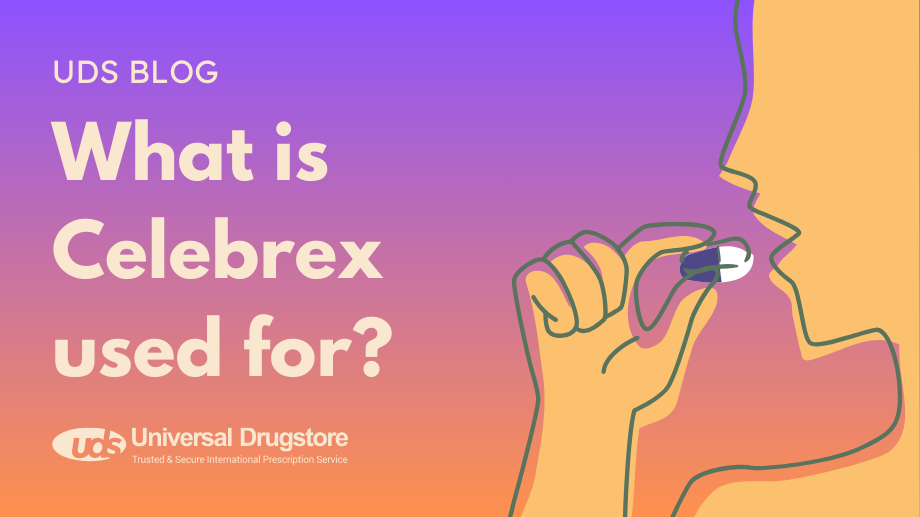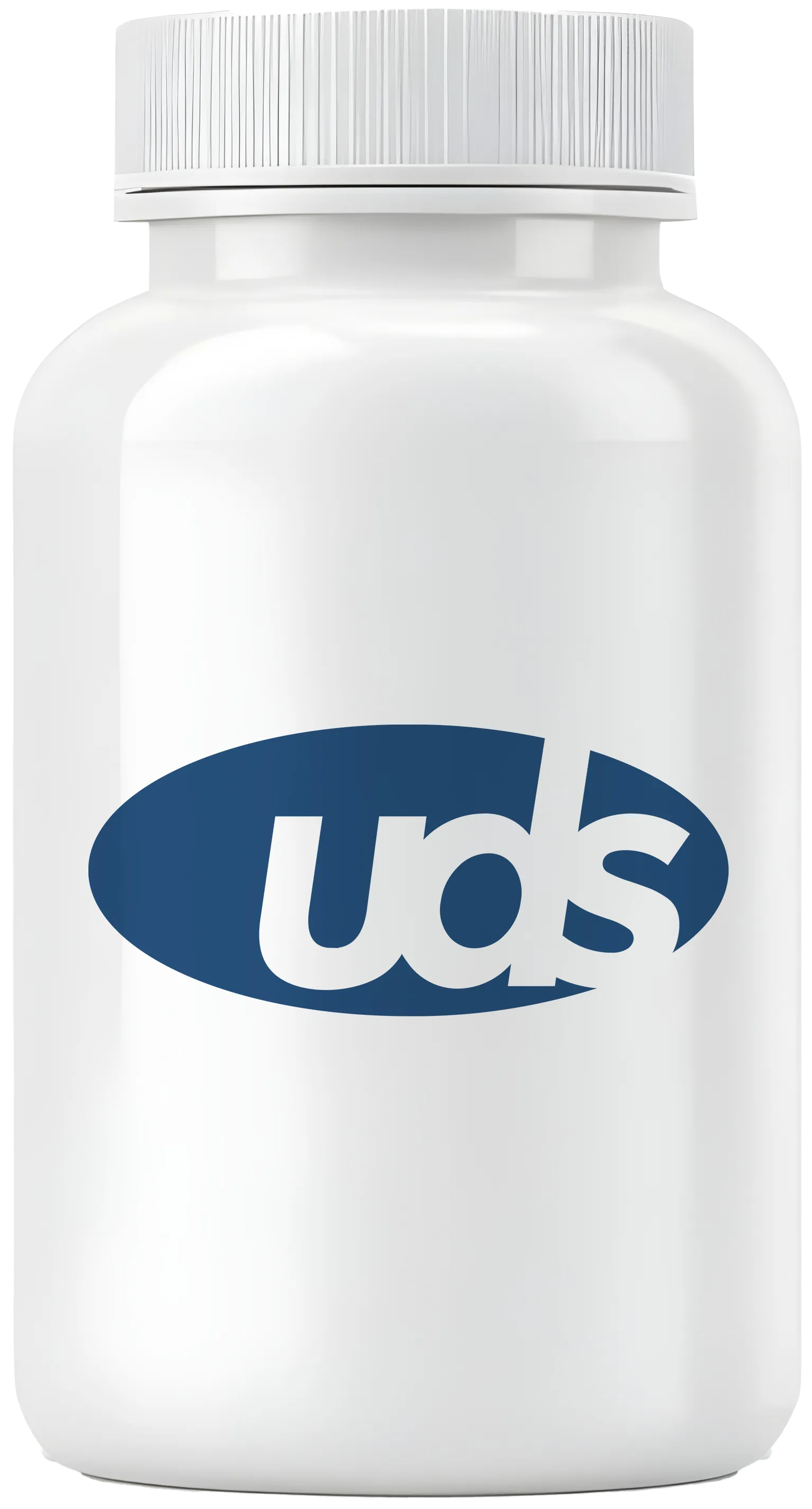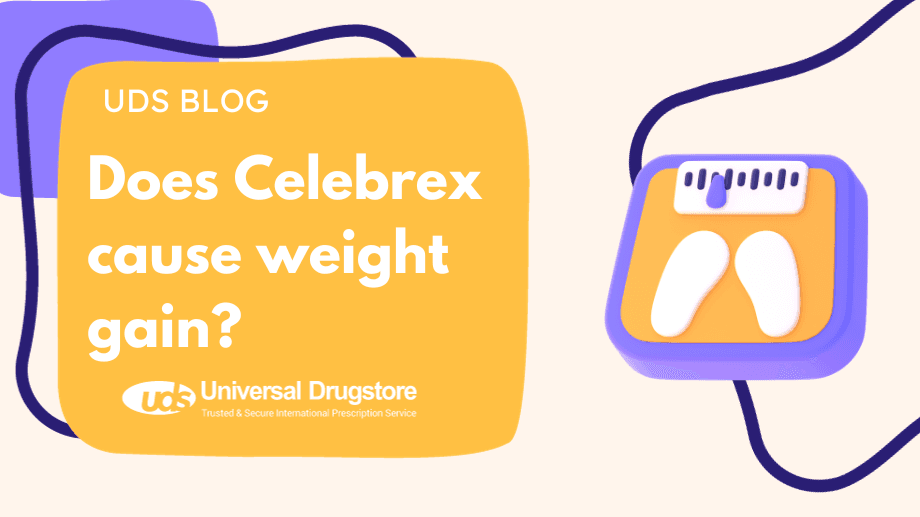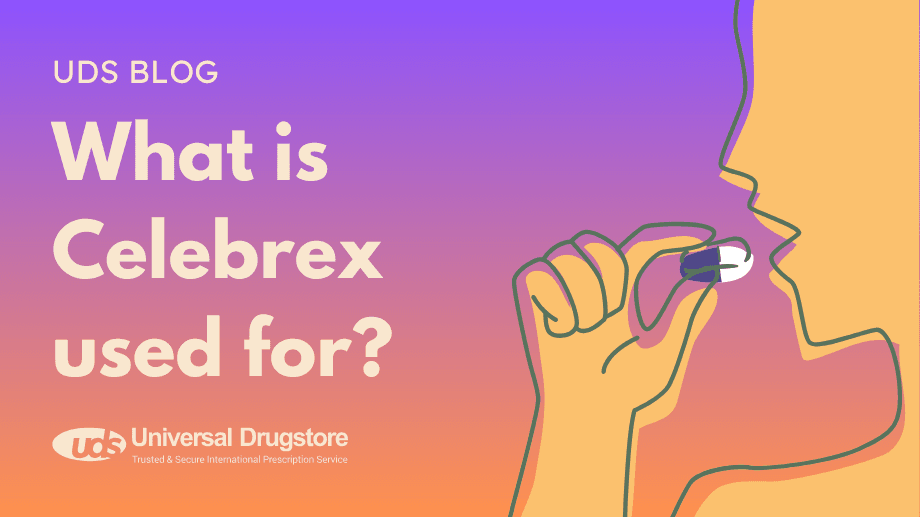What is Celebrex used for?

Celebrex (celecoxib) is a brand-name NSAID approved by the FDA in December 1998. It was developed to help reduce gastrointestinal (GI) side effects commonly seen with other NSAIDs. It is typically taken once or twice a day to help treat:
- Arthritis: Relieves inflammation, swelling, stiffness, and joint pain from osteoarthritis, rheumatoid arthritis, and juvenile rheumatoid arthritis.
- Ankylosing Spondylitis: Treats spine joint inflammation.
- Acute Pain & Menstrual Cramps: Provides relief from short-term pain and discomfort from menstrual cramps.
Celebrex FAQs
How does Celebrex work?
Celecoxib, the active ingredient, is a COX-2 inhibitor. It blocks cyclooxygenase-2 (COX-2), an enzyme that promotes inflammation by increasing prostaglandin levels. Blocking COX-2 reduces pain and swelling in arthritis and other conditions.
What doses of Celebrex are available?
- 50 mg
- 100 mg
- 200 mg
- 400 mg
What is the dose of Celebrex?
Adults
- Osteoarthritis: 200 mg once daily or 100 mg twice daily
- Rheumatoid arthritis: 100–200 mg twice daily
- Ankylosing spondylitis: 200 mg once daily or 100 mg twice daily (may be increased to 400 mg)
- Acute pain/menstrual cramps: 400 mg once, then 200 mg if needed on Day 1; then 200 mg twice daily
Children (2+ years)
- 22–55 lbs: 50 mg twice daily
- >55 lbs: 100 mg twice daily
Dose adjustments may be needed for liver conditions.
What are the possible side effects of Celebrex?
Common in adults:
- Headache
- Indigestion
- Diarrhea
- Upper respiratory & sinus infections
- Stomach pain
Common in children:
- Headache
- Fever
- Stomach pain
- Nausea
- Cough
- Diarrhea
- Cold symptoms
Other possible side effects:
- Gas, vomiting
- Muscle/joint pain
- Swelling of limbs
- Dizziness, insomnia
- Ringing ears, rash, dry mouth
Serious side effects (seek help immediately):
- Allergic reactions (hives, facial swelling, trouble breathing)
- Heart attack, stroke, blood clots
- GI ulcers, black stools, coffee-ground vomit
- Liver damage (yellow skin/eyes, dark urine)
- Heart failure (shortness of breath, swelling, weight gain)
- Kidney problems (less urination)
- High potassium (nausea, weakness, tingling)
- Severe skin reactions (rash, blisters)
Shop Medications
Report side effects to the FDA at 1-800-FDA-1088 or www.fda.gov/medwatch.
Are there any drug interactions with Celebrex?
Possible interactions include:
- NSAIDs (ibuprofen, naproxen)
- Blood thinners (warfarin, aspirin)
- SSRIs (fluoxetine, sertraline)
- SNRIs (duloxetine)
- ACE inhibitors (lisinopril, ramipril)
- ARBs (valsartan, losartan)
- Beta-blockers (atenolol, propranolol)
- Diuretics (furosemide, HCTZ)
- Digoxin, fluconazole, lithium, methotrexate, cyclosporine
Who should not take Celebrex?
- People allergic to celecoxib, NSAIDs, or sulfonamides
- People with asthma or allergic reactions to aspirin or NSAIDs
- People before/after CABG surgery
Tell your doctor if you have:
- Bleeding or blood disorders
- Heart disease, high blood pressure, or stroke history
- Liver or kidney disease
- High potassium levels
- Asthma or nasal polyps
- Sulfa drug allergy
- Are pregnant (after 30 weeks) or breastfeeding
What if you miss a dose of Celebrex?
Take it as soon as possible. If it’s almost time for your next dose, skip the missed dose. Don’t double up.
What if you take too much Celebrex?
Call Poison Control at 1-800-222-1222 or seek emergency care. Symptoms include tiredness, nausea, vomiting, and stomach pain.
How do you store Celebrex?
Store at room temperature (68°F to 77°F). Brief periods between 59°F and 86°F are acceptable.
Is Celebrex safe during pregnancy?
Do not take after 30 weeks of pregnancy unless instructed by your doctor. It may cause complications for the baby.
Does Celebrex have a generic?
Yes, celecoxib is the generic version. It is FDA-approved and equally effective as Celebrex.
Related Medications
- Advil (ibuprofen)
- Anaprox DS (naproxen)
- Mobic (meloxicam)
- Cataflam (diclofenac)
- Voltaren Gel (diclofenac gel)
- Clinoril (sulindac)
- Lodine XL (etodolac ER)



